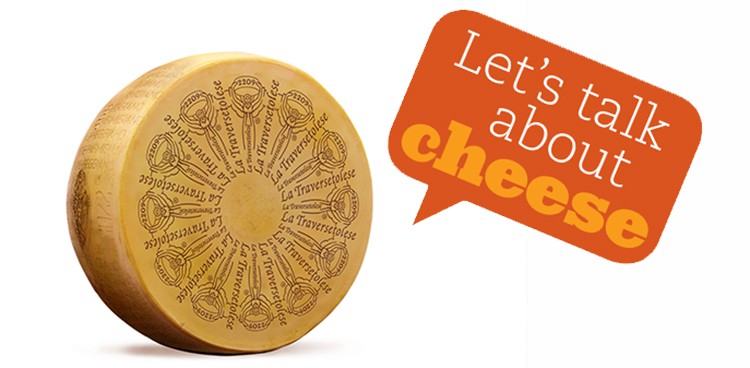
At tomorrow’s Let’s Talk About Cheese event in Boston’s Copley Square, you’ll get the full lowdown on cheese. There will be classes on different kinds of cheeses and how to find the best wine and cheese pairings, not to mention the main event: four 90-minute tasting sessions where you’ll sample over 200 cheeses from all across the globe. Here’s a sneak peek at some of the wonderful wedges you’ll be munching on this Saturday:
Le Gruyère AOP

The Swiss cheese that’s the bee’s knees, Gruyère is firm, yellow, and incredibly delicious. After production, it’s given at least five months to mature. Gruyère should be heavy somewhat flaky. There is an alluring mix of sweet and salty flavors which give way to a nutty, caramel taste that contains hints of earth, fruit, and mushroom.
Jarlsberg

Jarlsberg is a Norwegian cross between a Dutch gouda and a Swiss Emmentaler. It was first produced in the mid 1950s, and the original makers took ten years to make the cheese flawless before believing it fit for large-scale production. Made from pasteurized cow’s milk, this smooth, whole-filled, wax-rinded cheese works great for cooking and for stacking. It’s the perfect grilled cheese option due to the how easily it melts. It has a soft, buttery, and vaguely sweet flavor, and pairs great with a crisp Sauvignon Blanc or Gewürztraminer.
Parmigiano Reggiano

This is the real deal, folks—in Europe, you can’t call any hard cheese you’d like to grate over your plate of spaghetti and meatballs “Parmesan” unless it’s produced in select provinces in Northern Italy. This legendary recipe is thought to be over 800 years old.
BelGioioso Caciocavallo

While BelGioioso is located in Wisconsin, they definitely do not slack up on their Italian cheeses game. Their Caciocavallo cheese is based on an old Italian stylke—the name, literally “horse cheese,” is said to come from the method of aging the curds by tying one to anothewr and hanging them over a wooden board like saddlebags. The cow’s milk cheese is hard and resembles a water balloon. Its sharp, spicy flavors pairs well with Primitivo wine.
Vermont Creamery Bonne Bouche

This ash-ripened goat cheese is Vermont Creamery’s most sought-after geotrichum-rinded cheese. Bonne Bouche (which translates to “good mouth”) only matures for about eighteen days before consumption, leaving it with a yeasty flavor. A rosé will really bring out the flavor of this soft, creamy cheese.
Cheeseland Kokos

Kokos cheese’s surprising and out-of-this-world blend of coconut cream and Dutch gouda earned it the grand prize at this year’s SIAL Innovation Award Ceremony. Made with pasteurized cow’s milk and vegetarian rennet, Kokos has a nutty flavor with a hint of sweetness. This creamy delight goes great with most any white wine.



